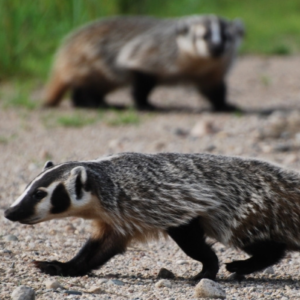
Common Nighthawk Nature Canada
This bird used to be considered common in Canadian communities. But over the last 50 years, the population has declined by 68%. Save endangered species today by joining one of our campaigns! Help End the Extinction
Vital Signs
- Common name: Common Nighthawk
- Latin name: Chordeiles minor
- Conservation Status: Threatened (currently being considered for status change)
- Range: Throughout Canada, but not in the far north
- Lifespan: Average 4-5 years
- Size: length of 21-25cm, wingspan of 53-57cm, weight of 65-98g

The Common Nighthawk is dark brown with speckled plumage. It is distinguishable by long, narrow, pointed wings that have a white stripe near the tip. They also have a slight notch in their tail.
Common Nighthawk Facts
- Has a recognizable call made of short “peents” combined with a booming sound. The boom is made by wind rushing through their feathers as they dive
- Sometimes, males of this species will roost together
- Are crepuscular birds, meaning they hunt at twilight times (dawn and dusk)
- Males court the females with a display of flying skills accompanied by their famous booming noise

Threats
The major threats to the Common Nighthawk are habitat loss and agricultural development, but the biggest is pesticide use. Large-scale farms use more and more pesticides, killing the insects that make up the Common Nighthawk’s diet.
Unfortunately, there’s little information available on the Common Nighthawk. This makes it difficult to determine other risks to these birds.
What’s Being Done
The Common Nighthawk and their nests are protected under the Migratory Birds Convention Act. (1994). There is also a recovery strategy in place with a focus on learning more about the Common Nighthawk, identifying important habitats, and addressing threats.

Canada has committed to the goal of protecting 30% of lands, ocean, and freshwater in Canada by 2030. This goal will help protect ecosystems, restore habitats, and fight climate change. All these things are a step in protecting Canada’s at-risk animals—so let’s hold the federal government to their promise.
How to Help
- Report Sightings: Look for the Common Nighthawk in your neighbourhood and record your finding with eBird. This helps local scientists and conservation practitioners in their work to protect the species.
- Take Part: Join our Bird-Friendly Cities program.
- Start At Home: Make your house and backyard bird-friendly! Follow these tips to help birds in your neighbourhood.
- Learn: Stay informed about endangered species by signing up for Nature Canada’s monthly e-newsletter.
- Find out more: Help us end the extinction by taking action for nature today—visit conservation websites like Nature Canada or join one of our campaigns!
Resources
- The Cornell Lab – All About Birds: Common Nighthawk
- COSEWIC – Assessment and Status Report
- Ontario – Common Nighthawk
Want to Help?
Hello nature life wilderness is the world’s envy. It’s our duty to keep our true north strong and green.
Donate

